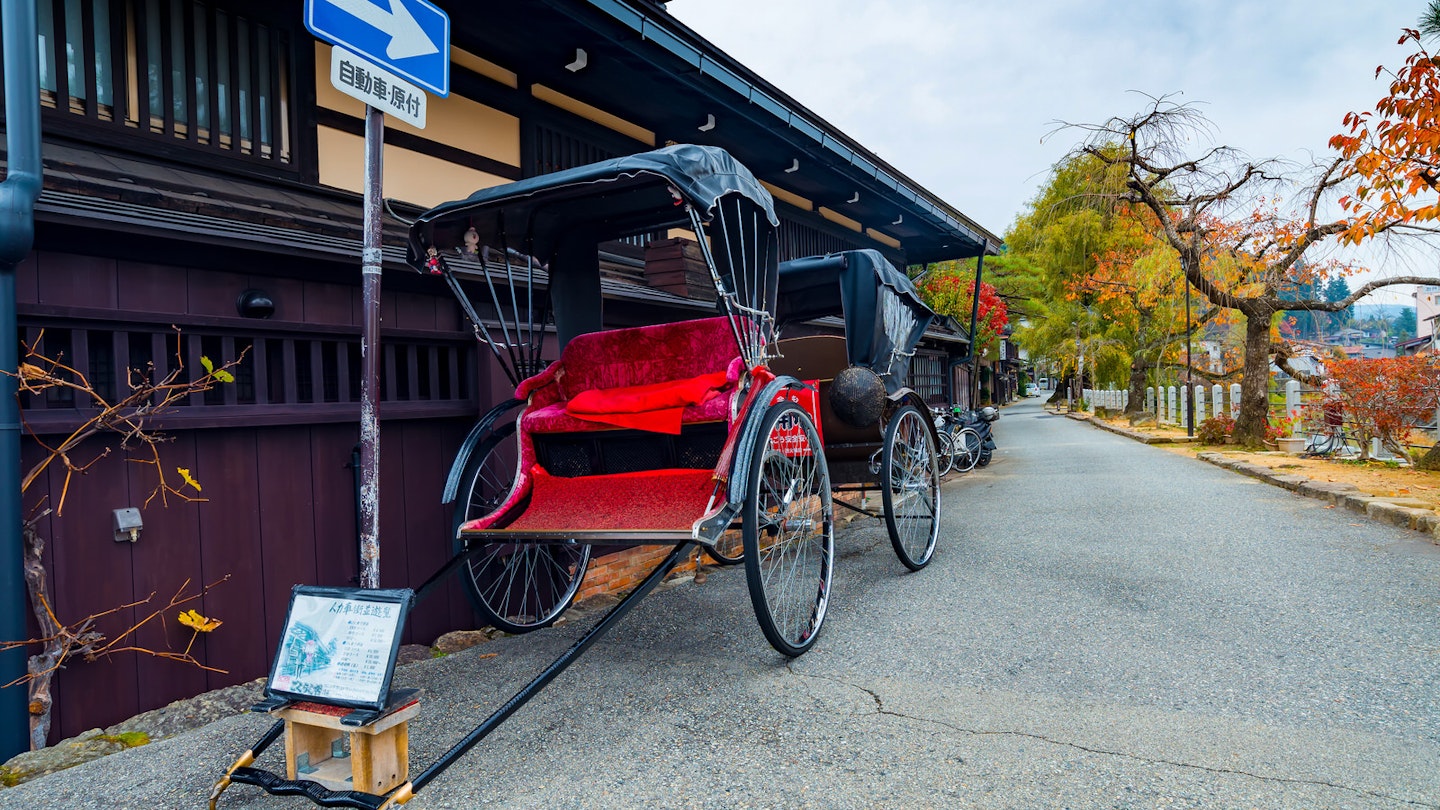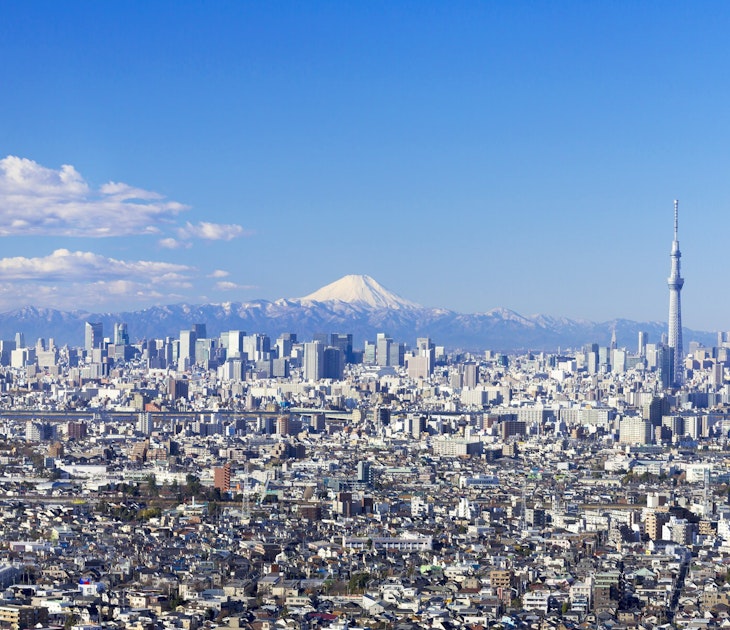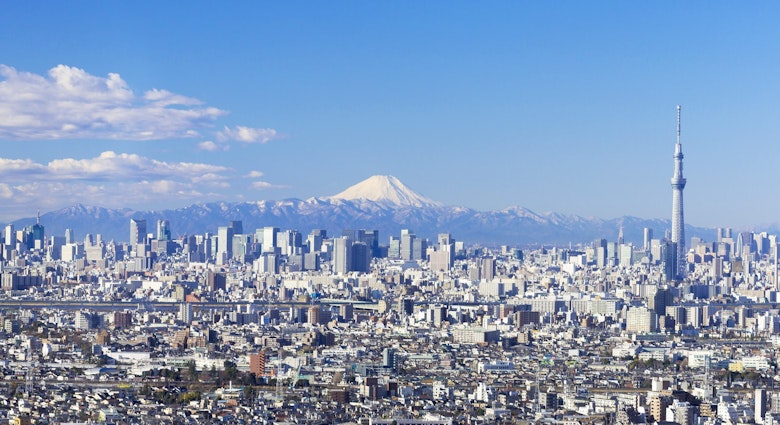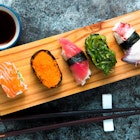Secluded in the mountainous Hida region of central Japan, Takayama is a place where Japanese history and tradition flourish in the 21st century. Atmospherically preserved neighbourhoods, a festival parade dating from the 1600s, busy morning markets, and a folk village all tell a tale of bygone times.
Add in museums, handicraft shopping, and local specialities to try (from beef to miso on magnolia leaves), and a trip to Takayama is well worth the journey from Tokyo.

Stepping back in time
Takayama has been largely untouched by fire, war and other ravages to remain one of Japan's best preserved towns, with some areas still retaining the character of the Edo period (1603–1868). This is evident in the immaculately kept, wood-built Sanmachi-suji neighbourhood, home to artisans, tiny museums, antique dealers, clothiers and cafes hidden behind centuries-old storefronts. Here also are some of Takayama’s several sake breweries, easy to spot by the spheres of cedar fronds (called sugidama) hanging above the brewery doors.

Nearby are two historic merchants' houses, once belonging to the wealthy Kusakabe and Yoshijima families; the homes show off traditional Japanese design details such as tatami mat flooring, deeply hued wooden posts and beams, and art displayed in tokonoma (alcoves). If you're more into mid-20th century Japanese nostalgia, the Takayama Shōwa-kan is a must. At this homage to the 1950s, you can stroll down a ‘lane’ to explore several themed rooms, including a doctor’s office, a movie theatre, a toy store and restaurant, all crammed with period objects.
Visiting the folk village
If you like Takayama’s old town centre, you'll love the open-air Hida Folk Village (Hida-no-sato). About 10 minutes out of town by bus, the village brings together more than 30 traditional houses and buildings of the region dating from the Edo period. Most of the houses were dismantled in their original locations and carefully rebuilt here. Look for the farmhouses with peaked A-frame thatched roofs (gasshō-zukuri), said to resemble hands in prayer. Within some of the houses artisans work away on traditional crafts, such as quilting and wood carving. From the village there are also great views of the surrounding Japan Alps.

Mornings are for markets
While city slickers in Tokyo and Osaka are snoozing on the subway to the office, Takayama country folk have been hard at work for hours at asa-ichi (morning markets) along the river Miya-gawa and in front of the Takayama-jinya (former magistrate's office). Locals set up stalls selling seasonal vegetables, traditional snacks, and crafts carved from wood or fashioned from fabric.
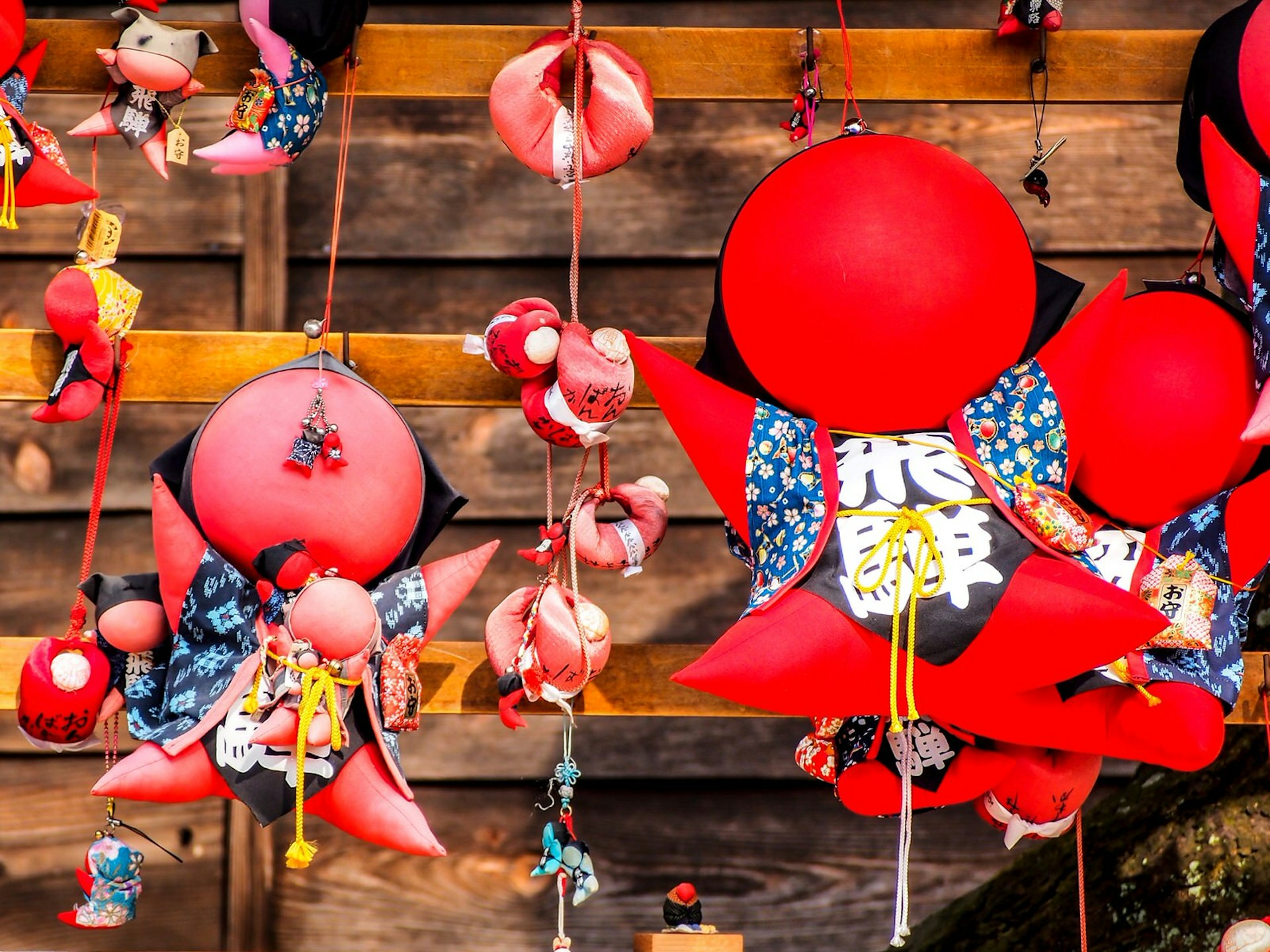
Among the crafts are saru-bobo, little red dolls with pointy limbs, featureless faces and humble, indigo outfits recalling the days when obaachan (grannies) made children's toys out of whatever scraps of cloth they could get their hands on. Nowadays saru-bobo are so ubiquitous that they've become the region's mascot.
Permanent storefronts by the Miya-gawa also proffer handicrafts and souvenirs, tastes of dried fruits and colourful pickles, and that all-important morning cup of steaming coffee. The new Uēmon Yokochō (ueyoko.skyworld.co.jp) provides one-stop shopping for crafts and foods, from gorgeous chopsticks and tableware to curry sauce. Sure, these markets are meant for tourists, but they're still a fun peek at local culture.
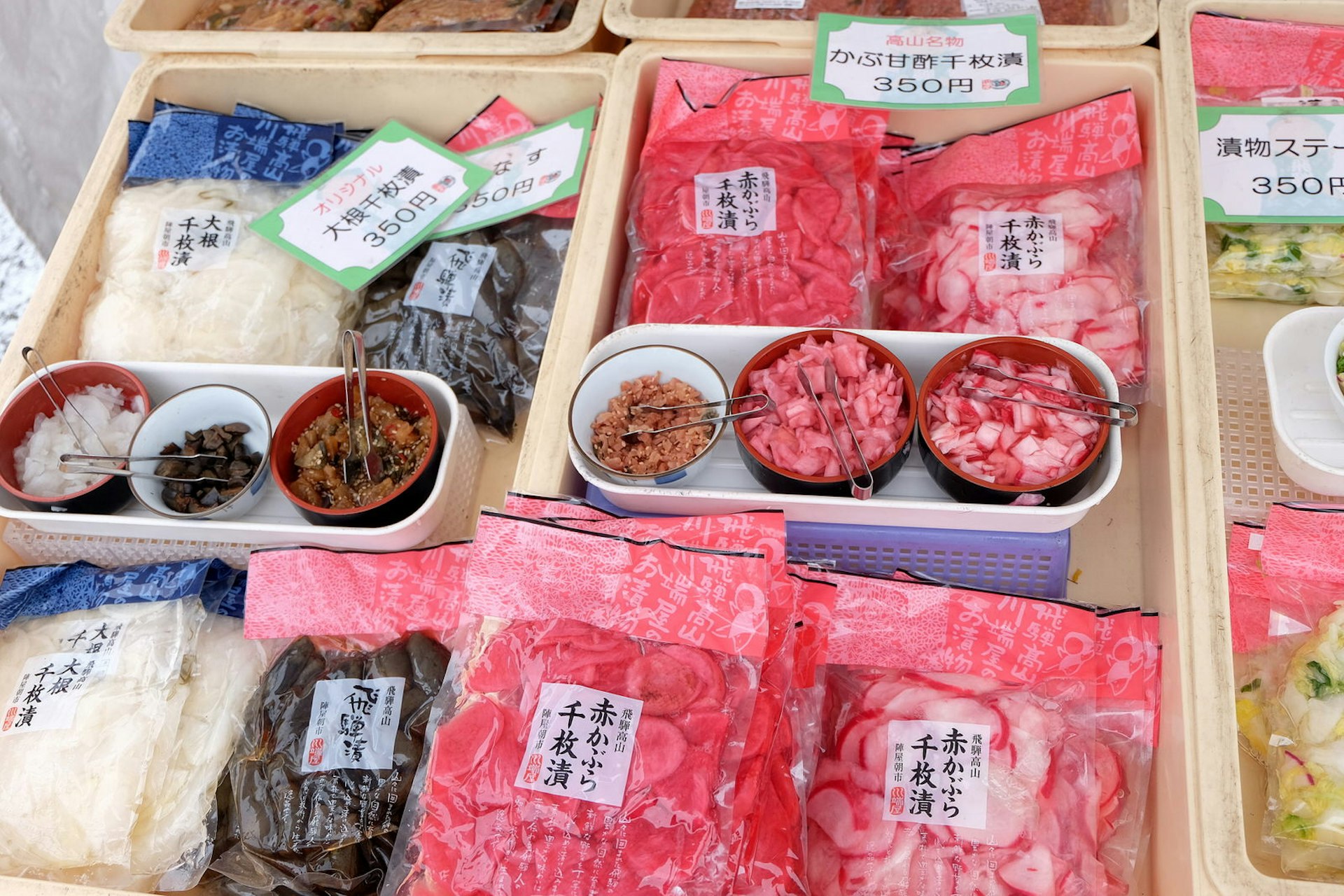
Floating through festivals
Takayama is also host of one of Japan’s best festivals. The Takayama Matsuri is highlighted by displays and parades of about a dozen yatai (floats), each spring (14 and 15 April) and again in autumn (9 and 10 October). The yatai are spectacles themselves, towering three storeys tall, detailed with carvings, draped with lanterns and curtains in brilliant reds and golds, and ornamented with karakuri ningyō (mechanical puppets) performing acrobatic stunts. The yatai parades are the highlight of the festival, taking place in the evenings of 14 April and 9 October, accompanied by traditional music.

Thousands of visitors descend on Takayama on festival days, so if you're thinking of a visit around this time, reserve your lodgings as far in advance as possible (otherwise stay elsewhere in the region and make a day trip of it).
For those who don’t make it to the festival, the Takayama Festival Floats Exhibition Hall is the next best thing. The exhibition hall operates year-round and shows a selection of the festival floats as well as a short film of the procession. Nearby, the Karakuri Museum houses lion masks, instruments and drums related to festival dances, and puts on karakuri ningyō shows.

Tasting Takayama specialities
Takayama is famous for soba (buckwheat noodles), and the local variety of wagyū (Japanese beef), called Hida-gyū (Hida is the feudal name for the region), which finds its way into skewers, croquettes and steamed buns, all sold as street food. Then there's hoba-miso, sweet miso paste grilled on a magnolia leaf over a clay hibachi burner. Take a small bit with your chopsticks and top your rice with it, repeating until every delectable bite is gone. It's best eaten in a ryokan (traditional inn) while lounging in your yukata (cotton bathrobe).
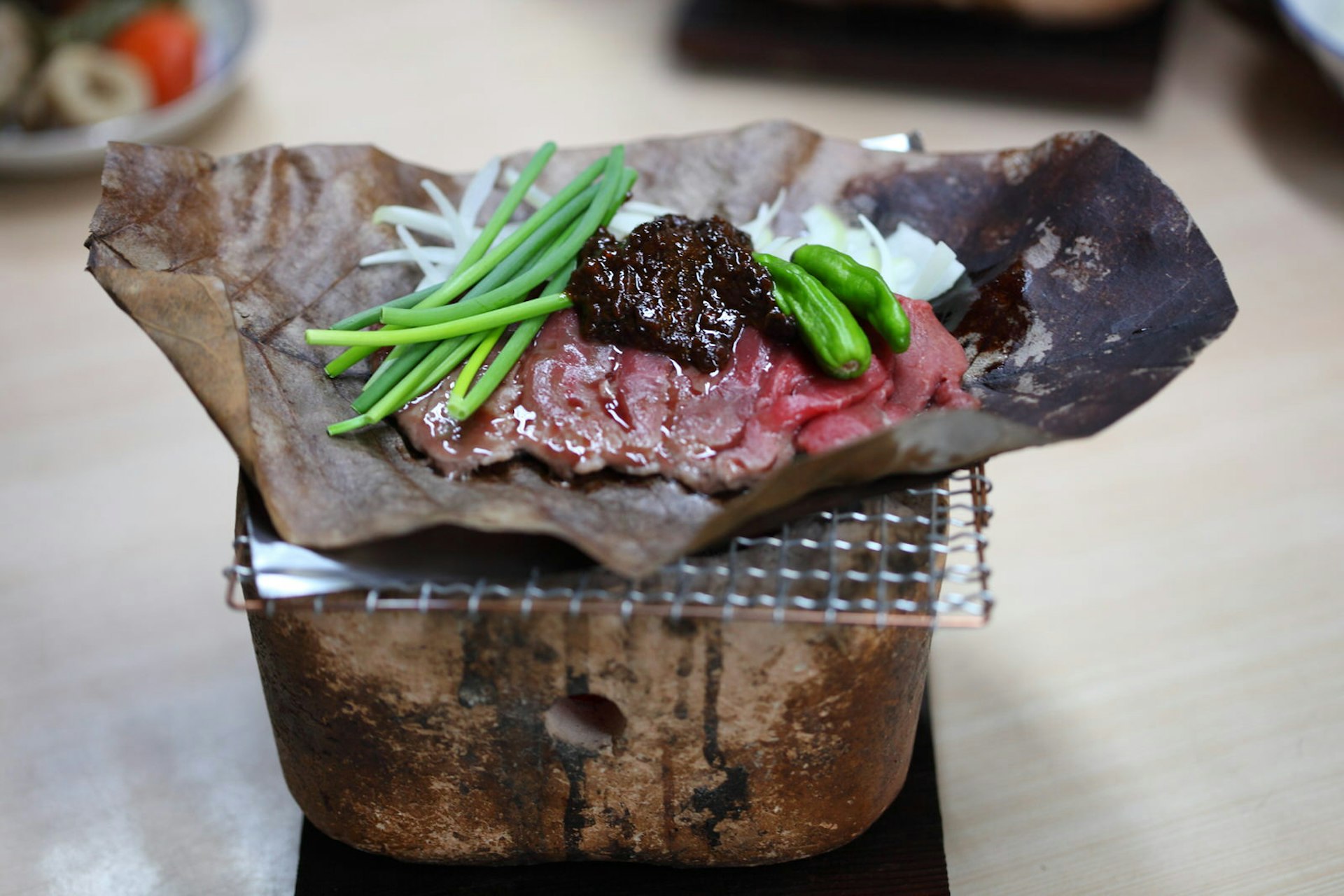
Your Name detour
The Hida region has also come into the spotlight anew following the success of the 2016 blockbuster film Your Name (Kimi no Na Wa) – history's highest grossing anime feature – as devoted fans have made the Hida region a pilgrimage destination for location spotting. Your Name tells the story of two high school students – one in Tokyo and the other in a remote village – who briefly swap bodies. While the country town in Your Name is a composite of several Japanese locations, director Makoto Shinkai also used recognisable sites around Hida-Furukawa, about 15 minutes by train from Takayama, in the film. Conveniently for anime fans making this detour, Hida-Furukawa train station is one of the locations, as is Hida City Library, about five minutes’ walk from the station.

Plan your trip
From Tokyo or cities to the south (eg Kyoto and Osaka), Takayama can be reached by shinkansen (bullet train) service to Nagoya, then connecting to a limited express service on the JR Takayama line. From Tokyo it’s a total journey time of around 4½ hours, passing by rivers, gorges and mountains along the way. Try to time your journey to catch one of the limited ‘Wide View’ Hida trains, which have larger windows to make the most of the scenery.
There's no bad time of year in Takayama, though spring and autumn (especially April, May, October and November) tend to have the most reliably pleasant weather. Summers run about 5°C cooler than in larger metropolises further south. Temperatures hover around freezing from December through March, when snow can pile up to a metre per month or more. In exchange for the chill, though, snowscapes are lovely, especially in the mountains out of town, and Sanmachi-suji's sake brewers are in full gear. If you're coming around the spring and autumn festival times, prepare for crowds.
